No. 26 Powderization of Propolis Extract by the Use of Cyclodextrins
Summary
Propolis is a natural hive product that exhibits a broad spectrum of biological activities such as antibacterial, antiviral, anti-inflammatory and tumor growth inhibition. However, the viscous characteristic of propolis gives its intractability for a daily intake in foods and beverages. Here we report on the fine powder formation from viscous propolis ethanol extract formulated with γ-CD for easy handling.
Problems of Propolis Extract and Study Points
- PUNGENCY
- SOLUBILITY and/or DISPERSIBILITY in WATER
- SMELL
- INDUSTRIAL HANDLING
- POWDERIZATION
- BIOAVAILABILITY
- STABILITY
Propolis Extract
Vendor:Manuka Health
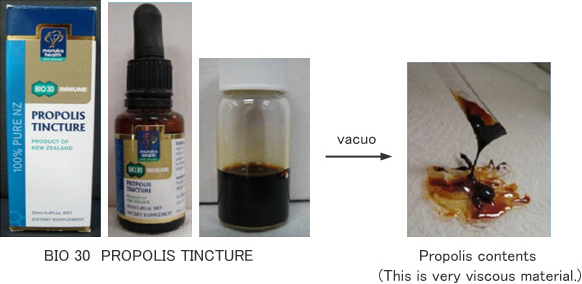
Preparation of Propolis-CD
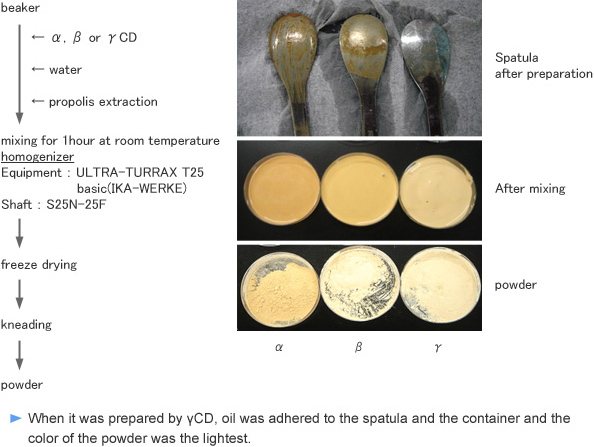
The dispersibility test of Propolis-CD
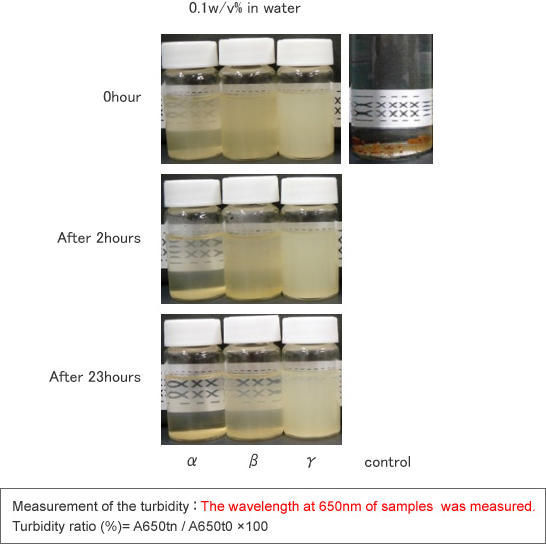
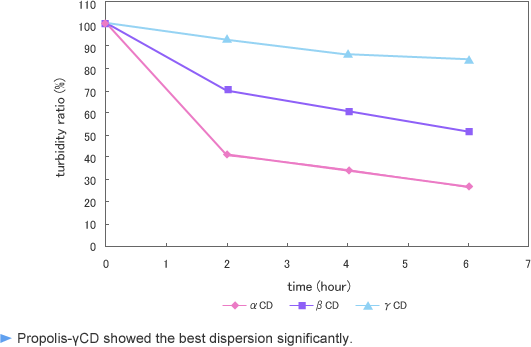
The SENSORY TEST OF PROPOLIS with CDs
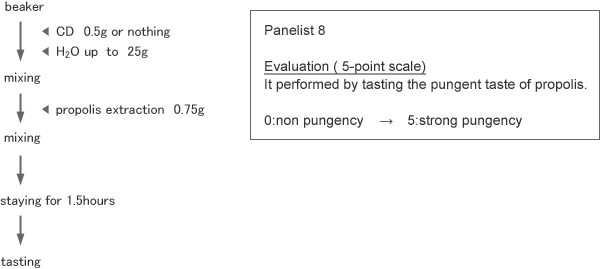
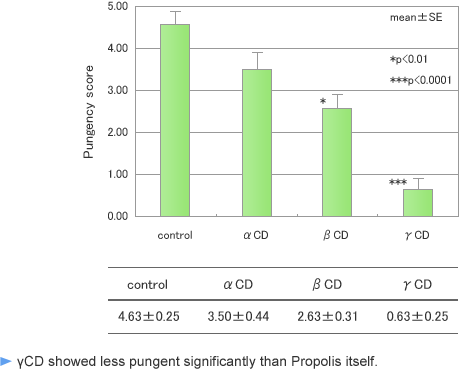
The SENSORY TEST of Propolis-γ-CD
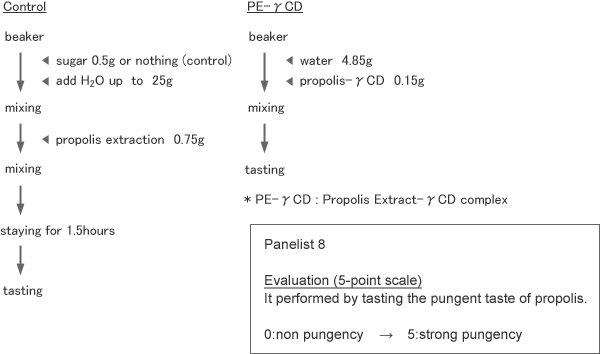
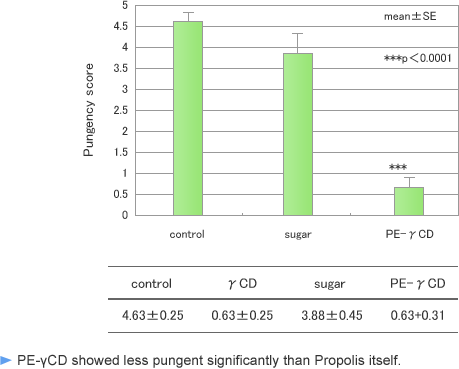
The analysis of Propolis-γ-CD - Total Propolis contents (p-Coumaric acid equivalents test) -
Definition
The total peak area of the HPLC chromatogram at 330nm from 0 to 30 minutes were expressed as total propolis contents.
HPLC analytical method
Column SunFire C18 5μm 4.6mm I.D. x150mm (Waters Lot : 0130382611)
Mobile phase : methanol 70 / water 30 / acetic acid 1 (isocratic)
Flow rate : 1.2mL/min
detector : UV (330nm)
Japan Health Food &
Nutrition Food Association's method
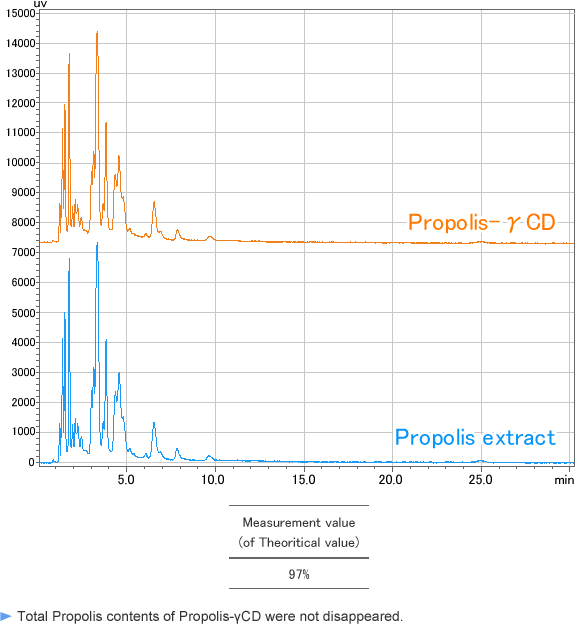
Analysis of PROPOLIS-γ-CD ② - The determination of total flavonoid -
Principle
Total flavonoid contents were expressed as quercetin equivalents.
method

- mixing
- 1h incubation at room temperature
- The absorbance is measured at 420nm.
S. Kumazawa et al. /
Food Chemistry 84 (2004) 329-339
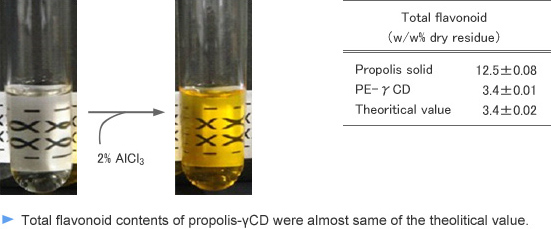
ANALYSIS of PROPOLIS-γ-CD ③ - The determination of total polyphenol -
Principle
Total polyphenol contents were expressed as gallic acid equivalents.
method

- mixing
- add 10% Na2CO3 0.5ml
- mixing
- 1h incubation at room temperature
- centrifuge (3000rpm, 5min)
- The absorbance of the supernatant is measured at 760nm.
S. Kumazawa et al. /
Food Chemistry 84 (2004) 329-339
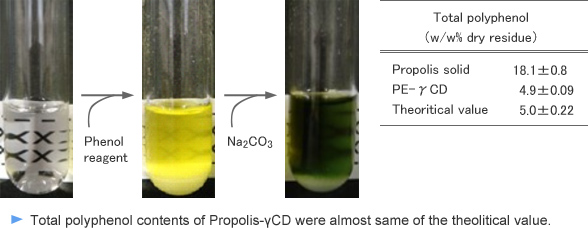
Analysis of PE-γ-CD content HPLC chromatogram and MS spectrum
Analysis method
column : CAPCELL PAK C18 ACR (SHISEIDO)
5μm(Median Particle Size), 2mm(Inner diameter), 250mm(Length)
Mobile phase : phase A : 0.1% formic acid in water
phase B : 0.08% formic acid in acetonitrile
detector : PDA and MS
interface : ESI SIM : negative m/z 283
temperature : 40℃
Flow rate : 0.2 mL / min
program : 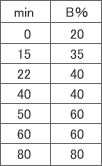
MS spectrum at tR 37.5 min for CAPE
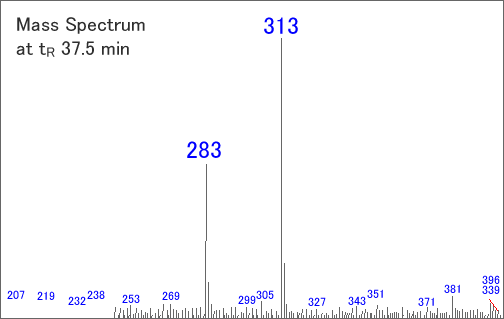
HPLC chromatogram
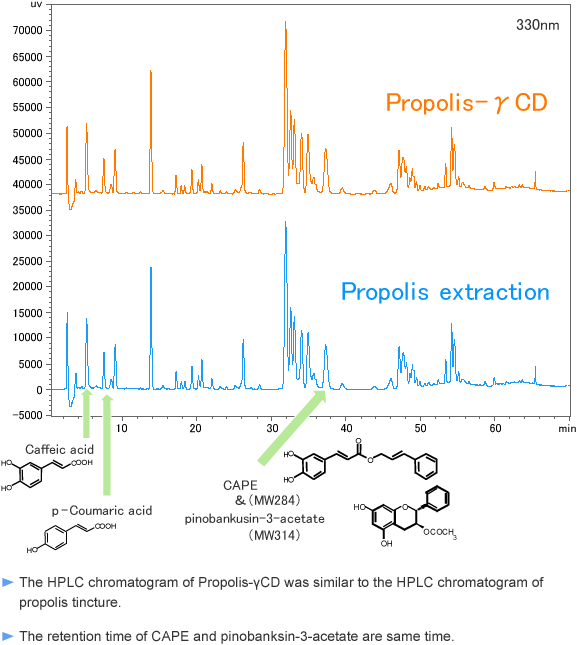
MS chromatogram of CAPE and quantitative determination.
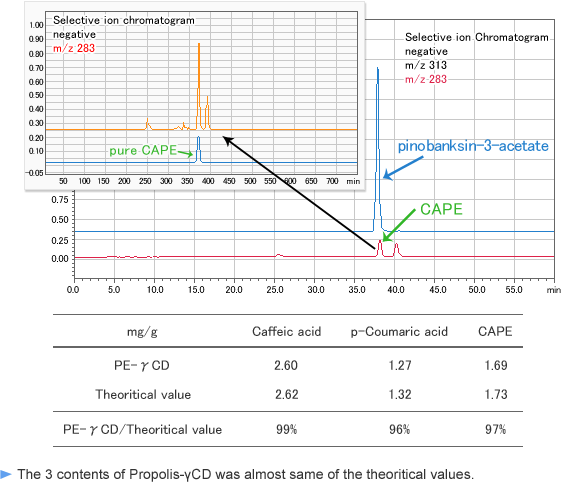
Discussion
- Which CD was the best for the powderization of Propolis extraction?
→ When it was prepared by γ-CD, oil was adhered to the spatula and the container.
→ Because of dispersibility and improvement of pungency, γ-CD was the best of 3. - Sensory test of Propolis-γ-CD
→ Propolis-γ-CD showed less pungent significantly than Propolis itself. - Analysis of Propolis-γ-CD
→ The contents of Propolis-γ-CD was almost same of the theoritical values. - The problem of the β-CD's safety for human consumption
In USA and Europe, The Acceptable Daily Intake (ADI) of β-CD was limited to less than 5mg/kg/day in Joint Expert Committee on Food Additives (JECFA).
But α-CD and γ-CD were not limited.
In this study, γ-CD showed the best performance for the powderization of Propolis extraction.
The industrial handling, dispersibility and pungency of Propolis extraction were improved by the γ-CD.
Further, we study the stability and bioavailability of Propolis-γ-CD, and smell.
